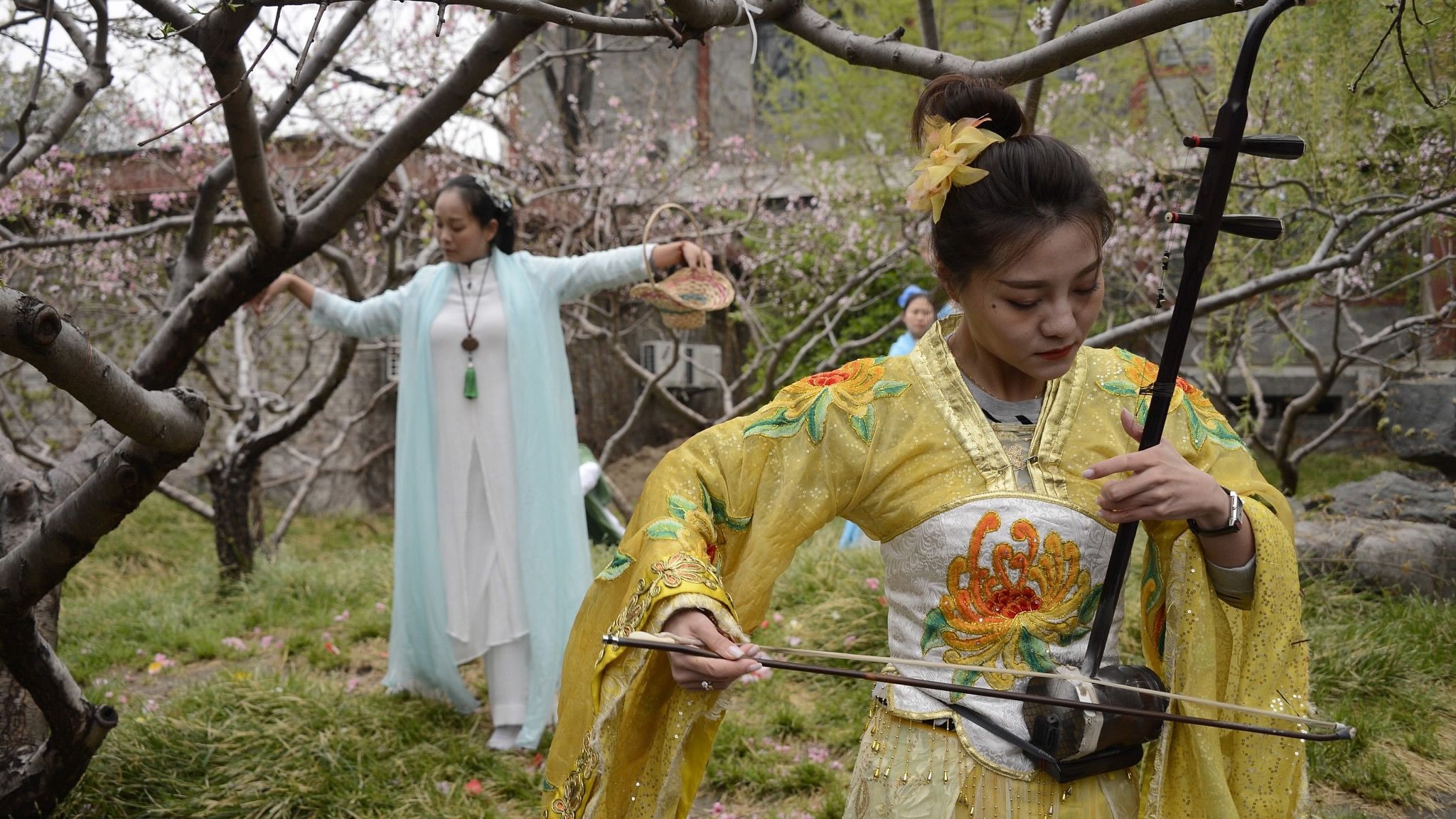
Culture
19:18, 05-Apr-2018
Traditions kept alive at Beijing's Grand View Garden
By Shen Li

Thursday marks the traditional Chinese Qingming Festival, also known as the Tomb-Sweeping Day. It is a time for people to remember their ancestors, and also an occasion for outings. At Beijing's Grand View Garden, traditions are honored as people embrace the misty outdoors.
Although a bit chilly, a crowd builds here at Beijing's Grand View Garden, for a special dance performance.
Performers in traditional costumes are recreating the scene "Daiyu Burying Flowers". It comes from the novel "A Dream of Red Mansions", one of China's four literary classics, written by Cao Xueqin in the 18th century during the Qing Dynasty.
In fact, the garden was a filming site for the 1987 TV series of the classic, and a wide range of activities has been arranged for the Qingming Festival.

Performers play traditional Chinese musical instruments. /VCG Photo
Performers play traditional Chinese musical instruments. /VCG Photo
Zhang Yue, a staff member of the Grand View Garden said: "We've planned some traditional cultural activities during the Qingming Festival, and they are all related to 'A Dream of Red Mansions.' Apart from dances, visitors could also learn more about kite flying and the craft of making kites. Also we have a special exhibition of Suzhou embroidery. So, a wide range of choices."
Further into the garden, in the quadrangle is situated a workshop, specially dedicated to Cao's kite school.
A lot of people know Cao, author of "A Dream of Red Mansions", but few know he was also an expert kite-maker and wrote the book "The Guidebook of Kite Making".
Miu Bogang, an inheritor of Cao's kite school, explains the art and meaning of making kites.
He shared with CGTN: "Cao once wrote an eight-volume book illustrating different professions that ordinary people could use to make a living. One section in particular showed how to make swallow-shaped kites. There's a special meaning behind the tradition of flying kites during the Qingming Festival: It is believed you can put bad luck and bad fortune into the kite and send it into the sky, then you cut the thread and all your troubles are gone with the kite."
For some visitors, flying kites not only wards off bad luck but also can help with certain health conditions.
One visitor said: ”There are many benefits to flying kites. It may relieve back problems, for example, because you have to look up and turn your head around. It's good exercise."
Another added: "People like to fly kites especially during spring and autumn seasons because it's windy. And you get to appreciate the greenery and the blooming flowers."

Various kites made by Miu Bogang. /CGTN Photo
Various kites made by Miu Bogang. /CGTN Photo
Still, visitors could admire Suzhou embroidery up close at this exhibition.
"There are over 40 depictions of Suzhou embroidery in Cao Xueqin's novel Dream of the Red Chamber. It uses silk thread and is world renowned for its exquisite, elegant, clear and beautiful artistic style. So it's usually reserved for the noble and royal families. And at this exhibition you get to see different types of techniques," Bai Xuemei, curator of the exhibition said.
The Qingming Festival is one of the 24 seasonal division points in China, falling on April 4 to 6 each year. Whether through performances, kites, embroidery or other activities, people honor their ancestors throughout this time.
6km

SITEMAP
Copyright © 2018 CGTN. Beijing ICP prepared NO.16065310-3
Copyright © 2018 CGTN. Beijing ICP prepared NO.16065310-3